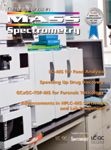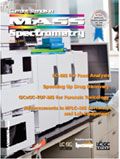TOC
Departments
Departments
Products 33

Cover image courtesy of Agilent Technologies, Santa Clara, California.
Ad Index 34
Articles
Microfluidic Chip-Based Technology as a Growing Trend in LC–MS Analysis 8
Christine Miller and Dayin Lin
A Reproducible Online 2D Reversed Phase–Reversed Phase High–Low pH Method for Qualitative and Quantitative Proteomics 14
Martha Stapels and Keith Fadgen
Recent Trends in the Use of LC–MS-MS for the Testing of Food and Environmental Contaminants 16
André Schreiber and Kristin von Czapiewski
Successfully Identifying Proteins and Their Modifications Using Electron Transfer Dissociation Linear Ion Trap Mass Spectrometry 22
Andreas Huhmer
Nonderivatized Drug-Screen Analysis in Urine with Automated Solid Phase Microextraction and Comprehensive Two-Dimensional GC–TOF-MS 26
John Heim and Scott Pugh
Improving Oligonucleotide Sensitivity and Separation for LC–MS Applications 30
Greg Scott, Matthew Champion, and Michael McGinley

Best of the Week: AI and IoT for Pollution Monitoring, High Speed Laser MS
April 25th 2025Top articles published this week include a preview of our upcoming content series for National Space Day, a news story about air quality monitoring, and an announcement from Metrohm about their new Midwest office.
LIBS Illuminates the Hidden Health Risks of Indoor Welding and Soldering
April 23rd 2025A new dual-spectroscopy approach reveals real-time pollution threats in indoor workspaces. Chinese researchers have pioneered the use of laser-induced breakdown spectroscopy (LIBS) and aerosol mass spectrometry to uncover and monitor harmful heavy metal and dust emissions from soldering and welding in real-time. These complementary tools offer a fast, accurate means to evaluate air quality threats in industrial and indoor environments—where people spend most of their time.